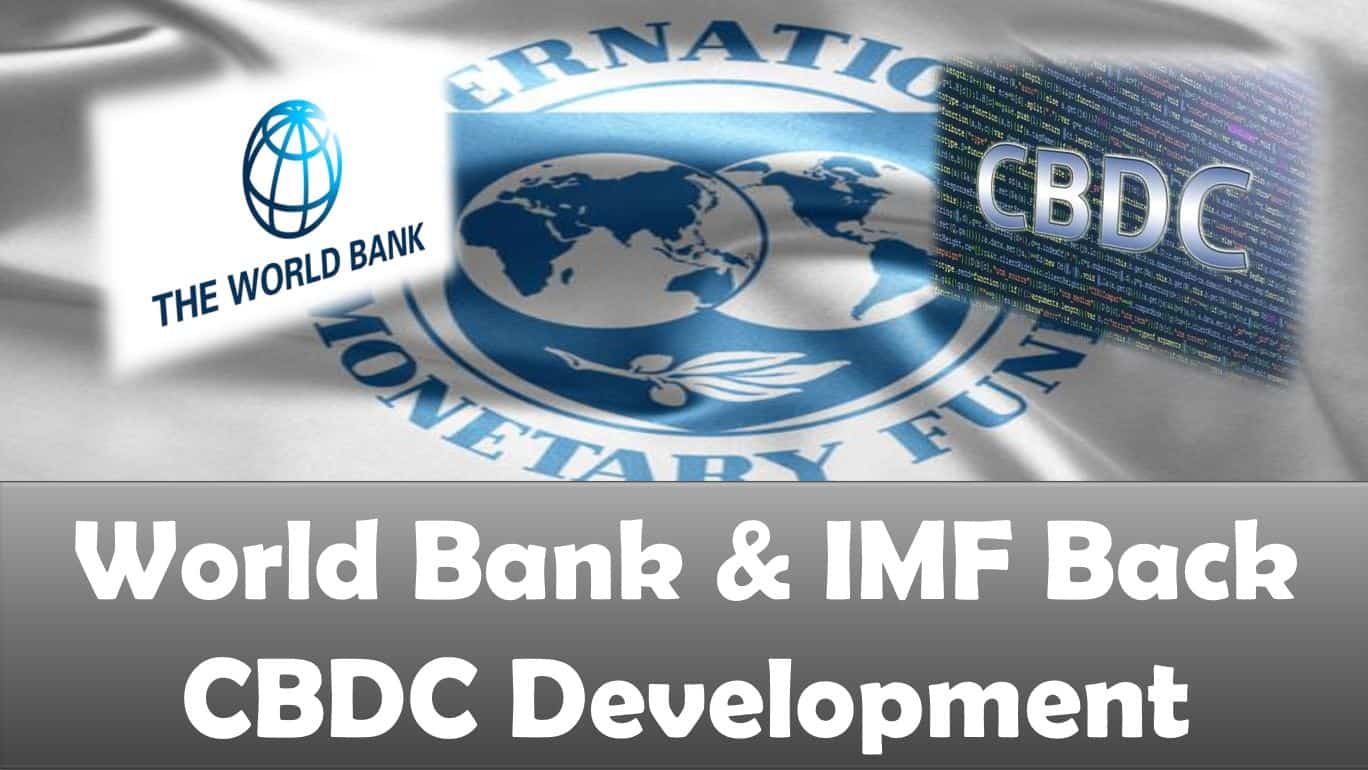
World Bank & IMF Back CBDC Development
Last updated on December 4th, 2022 at 10:46 pm
The World Bank and the International Monetary Fund (IMF) have come together to discuss the benefits realized from adopting central bank digital currencies (CBDCs).
The two financial institutions discussed CBDC adoption during the G20 summit. The joint report was also backed by the Bank for International Settlements (BIS).
According to these financial institutions, some of the CBDC projects that could work and aid in cross border payments include the development of a digital dollar.
According to the joint report issued by the three institutions, the development of CBDCs would boost the efficiency of cross border payments.
The report also concluded that some of the ways that CBDCs could help included promoting cost-effectiveness in financial transactions and making transactions faster.
A World Bank executive, stated that
“Faster, cheaper, more transparent and more inclusive cross-border payment services would deliver benefits for citizens, businesses, and economies worldwide.”
These institutions also stated that CBDCs would help economies start with a ‘clean slate’ when facilitating cross border payments. The report was created after a G20 summit held in Italy and supported by central banks and finance ministers.
According to the report, a CBDC could boost quicker and more efficient transactions. CBDCs could provide the same services that were also offered by retail customers that would enable swapping of currency from one person to the next to facilitate exchanges.
Designs & Risks of a CBDC
The United States Federal Reserve is looking into different designs that could be used to develop CBDCs and, more so, a digital dollar.
Recently, an official from the Federal Treasury stated that a digital dollar would not be as effective as a stablecoin. Since stablecoins have been developed by the private sector, they were much more efficient for cross border payments.
The Vice-Chairman for the Federal Reserve stated that
“Bad actors might try to steal CBDC, compromise the CBDC network, or target non-public information about holders of CBDC.”
The joint report also assessed the different risks that came with the development of a digital currency. Because of the limited regulations surrounding digital currencies, there would be conflict in exchange rate restrictions and monetary policy independence in different central banks.
The risks associated with the use of CBDCs increased when emerging markets and developing economies are concerned. The joint report also noted that regulatory policies concerning the use of CBDCs needed to be revised and regulators needed to invest a lot.
The objective of this report was to investigate the global effects of CBDCs; hence each country had the objective of assessing whether the benefits outweighed the effects.
“CBDCs have the potential to enhance the efficiency of cross-border payments, as long as their design follows the ‘Hippocratic Oath for CBDC design’ and its premise to ‘do no harm,” the report read.
Before summer ends, the Federal Reserve is expected to issue a study that will include the feedback collected from the public and the Congress.
Disclaimer
The information provided here is for INFORMATIONAL & EDUCATIONAL PURPOSES ONLY!
View our complete disclaimer on our Disclaimer Page








